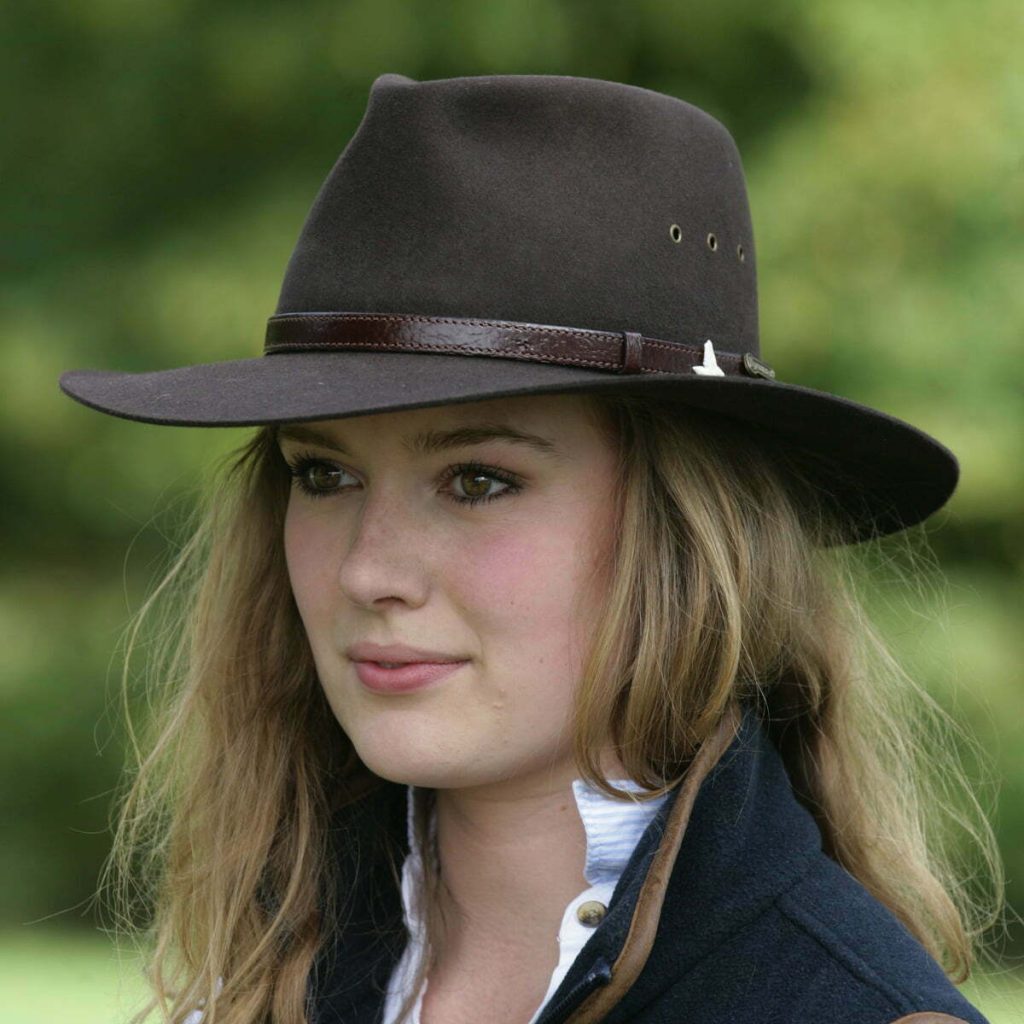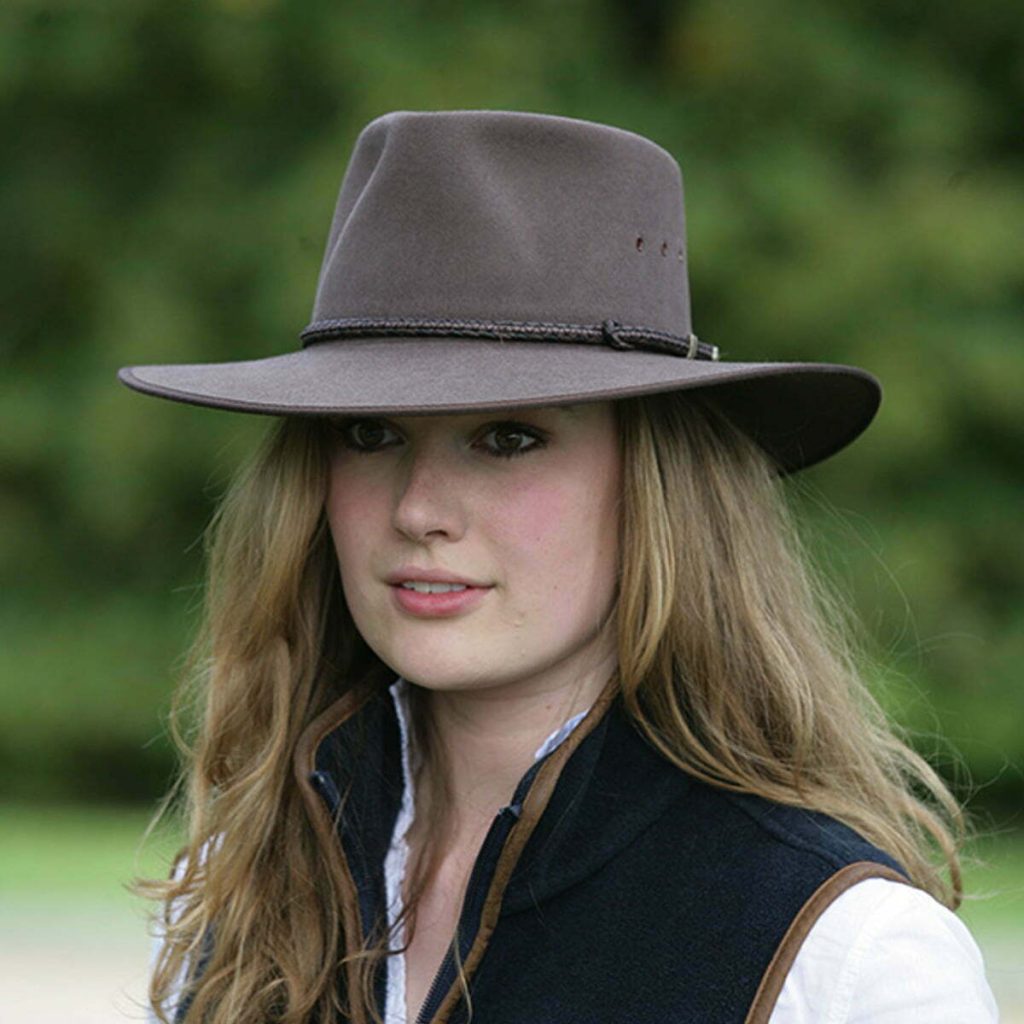Introduction
In the vast, sun-baked landscape of Australia, few symbols evoke as much national pride and cultural significance as the iconic Akubra hat. More than just a simple headwear, Akubras are a testament to the country’s rugged history, its people’s resilience, and a deep-rooted connection to the land. These hats have become synonymous with the Australian identity, gracing the heads of everyone from outback cattlemen to distinguished politicians, Hollywood stars, and everyday Australians alike.

Origins and History
The story of Akubra begins in the late 19th century when a young English hatter, Benjamin Dunkerley, arrived in Tasmania. In 1874, he established a hat-making business that would later evolve into what we know today as Akubra Hats. It was his innovative use of rabbit fur felt, a byproduct of the thriving rabbit industry at the time, that laid the foundation for the company’s success. The name ‘Akubra’ itself is believed to be derived from an Aboriginal word meaning ‘head covering.’
In the early 20th century, under the leadership of Stephen Keir I, the company moved to Sydney and began producing hats specifically designed for the harsh Australian climate. These hats were not only durable, but also provided excellent sun protection, quickly becoming essential gear for those working in rural areas. One such design, the ‘Fedora,’ would later transform into the now-famous ‘Slouch Hat’ worn by the Australian military since World War I, further cementing Akubra’s place in the nation’s heritage.
Style and Functionality
The classic Akubra design is characterized by its broad brim, high crowned dome, and distinctive pinched crown, offering both style and practicality. The hats come in various shapes and sizes, tailored to suit different needs and tastes. From the ‘Cattleman’ style, popular among farmers and ranchers, to the more formal ‘Balmoral’ suited for city wear, each hat embodies a unique blend of tradition and modern appeal.
One cannot overlook the functional aspects of Akubras. Made from high-quality rabbit fur felt, these hats are renowned for their water resistance, breathability, and remarkable durability. The wide brims protect against the harsh Australian sun while the optional chin straps ensure the hat stays put during gusty Outback winds. This perfect fusion of form and function has made Akubras a staple for outdoor enthusiasts and urban dwellers alike.
Cultural Significance
Beyond their practical uses, Akubra hats hold a special place in Australian culture. They are a symbol of national pride, often featured in parades, ANZAC Day commemorations, and official state events. The image of an Akubra-clad stockman or bushranger has become a romanticized representation of the Australian pioneering spirit.
Moreover, Akubras have transcended their utilitarian origins to become fashion statements, adorning the heads of celebrities on international red carpets and appearing in numerous films and television series set in Australia. Their timeless elegance and association with the romantic Outback lifestyle have made them a sought-after accessory worldwide.
Sustainability and Tradition
In an era where sustainability is paramount, Akubra continues to demonstrate its commitment to responsible practices. While still utilizing traditional fur felting techniques, the company sources its fur from managed and sustainable rabbit populations. Additionally, many models feature natural materials like leather and cotton, ensuring that each hat is not only durable but also environmentally conscious.
Akubra remains a family-owned business, with the Keir family at its helm for over four generations. This continuity has allowed the company to preserve its heritage while adapting to changing times. By combining age-old craftsmanship with modern innovations, Akubra ensures that each hat remains a wearable piece of Australian history.

A Legacy of Craftsmanship and Tradition
The story of Akubra begins in 1874 in Tasmania, Australia, where Benjamin Dunkerley started making rabbit fur felt hats. The brand soon relocated to Sydney, where it gained recognition for its superior craftsmanship and dedication to quality. Over the decades, Akubra hats have become synonymous with Australian culture, worn by farmers, stockmen, adventurers, and urbanites alike.
Materials and Construction
The felting process involves transforming raw fur into a dense, malleable felt, which is then shaped, blocked, and finished by skilled artisans. Each hat undergoes meticulous handcrafting, ensuring that it meets Akubra’s high standards of quality and comfort.
Iconic Styles
Akubra offers a diverse range of hat styles, each with its own unique characteristics and cultural significance:
- The Akubra Cattleman: Perhaps the most iconic of all Akubra hats, the Cattleman features a pinched crown and broad brim, providing ample sun protection. It’s favored by stockmen and farmers across Australia for its practicality and timeless style.
- The Akubra Snowy River: Named after the famous Australian river, this hat boasts a lower crown and medium brim, making it versatile for both outdoor adventures and urban settings.
- The Akubra Riverina: Known for its wider brim and softer felt, the Riverina offers superior sun protection and comfort, making it ideal for hot and sunny climates.
- The Akubra Banjo Paterson: Named after the renowned Australian poet, this hat features a teardrop crown and medium brim, embodying classic Australian style and literary heritage.
Cultural Significance
Akubra hats have transcended their utilitarian roots to become symbols of Australian identity and culture. They evoke images of the Outback, drovers herding cattle, and adventurers exploring remote landscapes. Whether worn for practical purposes or as a fashion statement, Akubra hats carry with them a sense of authenticity and connection to Australia’s vast and diverse terrain.
Enduring Popularity
Despite evolving fashion trends, Akubra hats have maintained their popularity and relevance. They appeal to a wide audience, from rural Australians to city dwellers seeking a touch of rugged elegance. .
Sustainability and Ethical Practices
By investing in quality craftsmanship and durable materials, Akubra promotes longevity and reduces environmental impact, making its hats a sustainable choice for consumers.

Craftsmanship and Heritage
This material undergoes a meticulous felting process to create a dense, resilient felt that forms the basis of each hat. Skilled artisans then shape and block the felt by hand, ensuring that every Akubra hat meets the brand’s exacting standards.
Iconic Styles and Varieties
Beyond their craftsmanship, Akubra hats are known for their distinctive styles, each with its own unique features and cultural associations:
- The Akubra Cattleman: This classic style features a pinched crown and a broad brim, offering excellent sun protection and durability. It’s favored by farmers, stockmen, and outdoor enthusiasts across Australia.
- The Akubra Snowy River: Named after the iconic Australian river, this hat features a lower crown and medium brim, making it versatile for both outdoor adventures and urban wear.
- The Akubra Riverina: Known for its wider brim and softer felt, the Riverina provides superior sun protection and comfort, making it ideal for hot and sunny climates.
- The Akubra Banjo Paterson: Inspired by the renowned Australian poet, this hat features a teardrop crown and medium brim, embodying classic Australian style and literary heritage.
Cultural Symbolism
Akubra hats have become enduring symbols of Australian identity and culture. They evoke images of the rugged Outback, drovers tending to cattle, and explorers traversing the vast Australian landscape. Beyond their practicality, Akubra hats represent a connection to Australia’s heritage and traditions, making them beloved by Australians and admired by enthusiasts worldwide.
Sustainability and Responsibility
In addition to their cultural significance, Akubra hats emphasize sustainability and ethical practices. The brand ensures that fur used in their hats is responsibly source, adhering to stringent environmental and ethical standards. By prioritizing quality craftsmanship and durable materials, Akubra promotes longevity and reduces environmental impact, aligning with the values of modern consumers seeking sustainable fashion choices.
Conclusion
Akubra hats are more than mere accessories; they are living legends woven into the fabric of Australian life. Each hat tells a story of resilience, tradition, and the enduring connection between the Australian people and their land. As the world evolves, Akubra continues to stand as a proud emblem of Australia’s past, present, and future. A testament to the enduring appeal of authentic style and heritage. Whether you’re traversing the dusty trails of the Outback or strolling through the bustling streets of a modern metropolis. An Akubra atop your head is a statement of pride, functionality, and undeniable style.
